STEREO Coronal Mass Ejection: From the EUVI to HI-2
There is a 22 hour gap in the data coverage for HI-2 which creates the appearance of a jump in the playback.
These are not standard images but are called 'running difference' images which highlight changes in the view. White pixels correspond to increases in brightness, while dark pixels reflect a decrease in brightness, with respect to the immediately previous image.
'Running differencing' generates some unusual effects. For example, the mottled background is created by the motion of the stars through the field-of-view as the spacecraft pointing direction slowly changes (the Andromeda galaxy is the oblong 'smudge' near the upper left corner). The planets Venus (right edge of HI-2) and Mercury are visible (near center of HI-1), their column of pixels saturated due to their brightness.
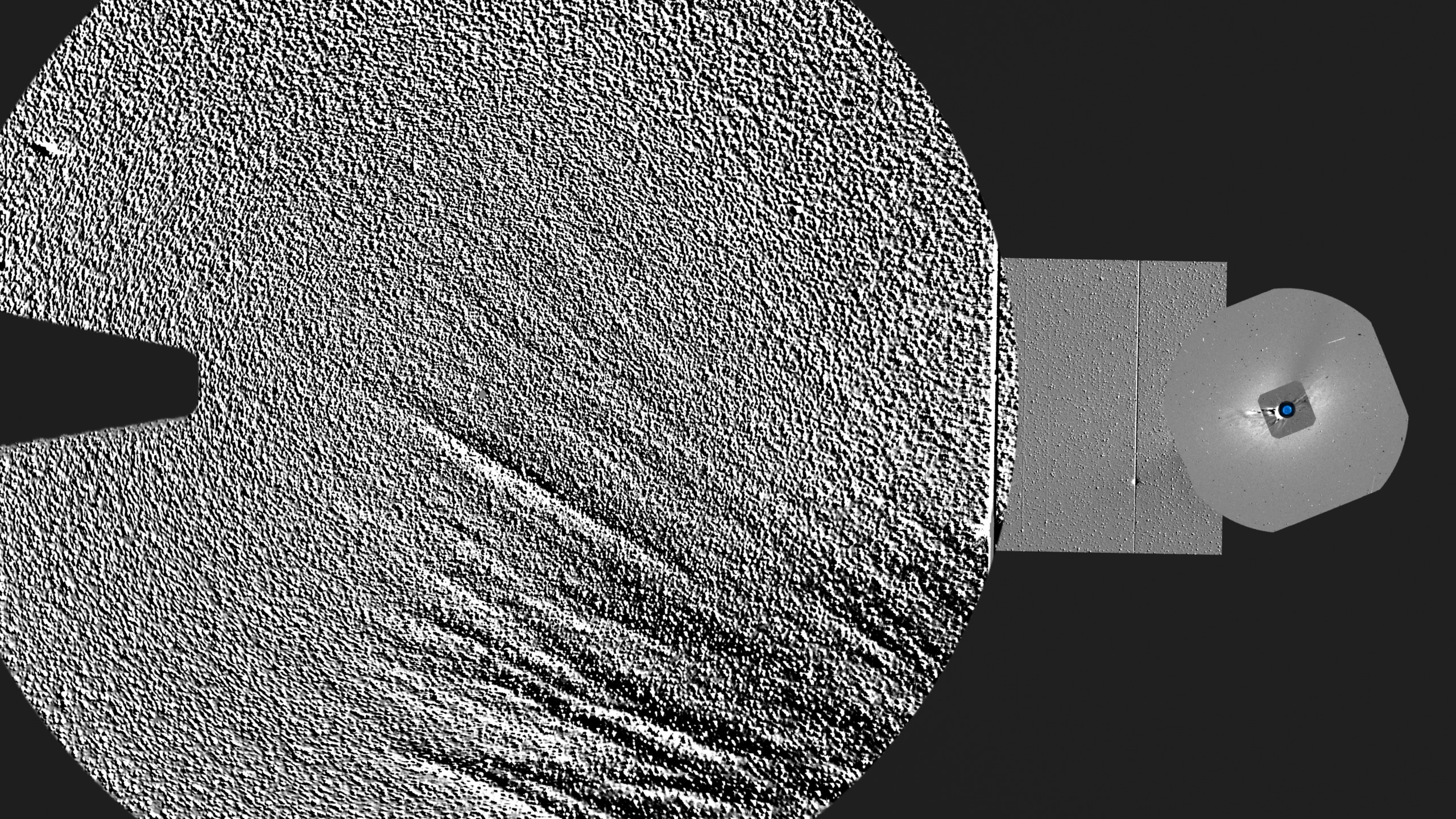
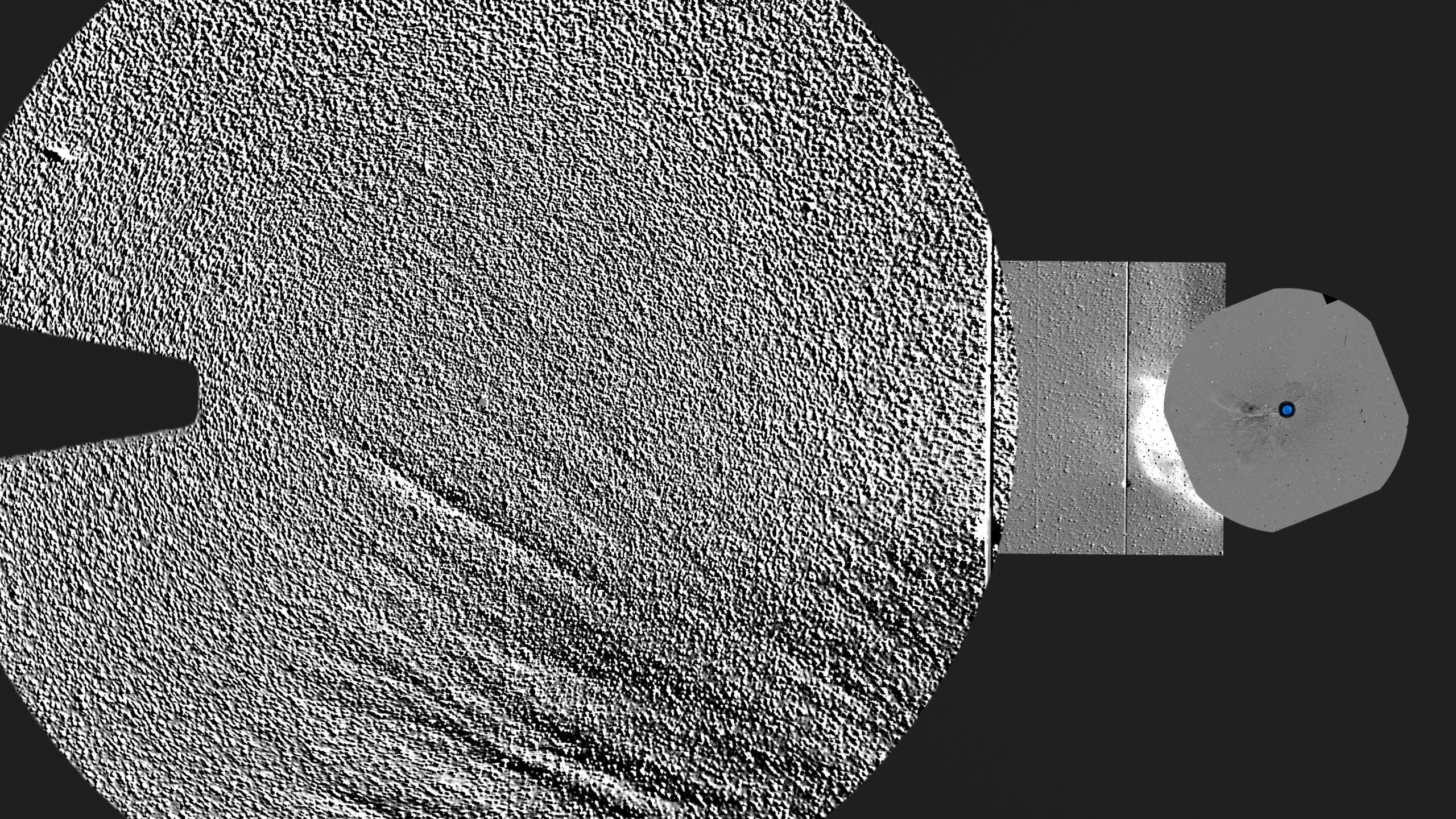
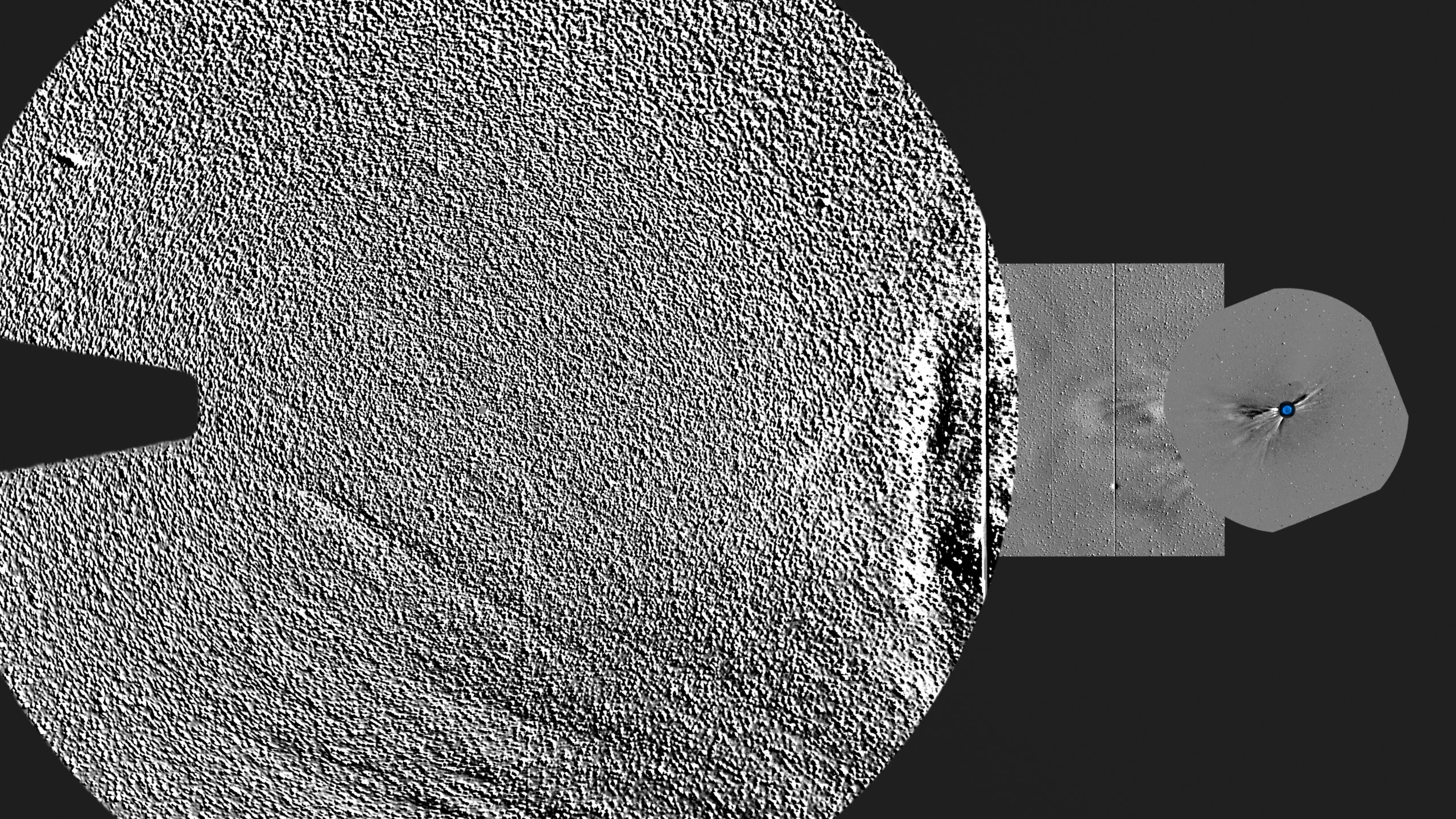
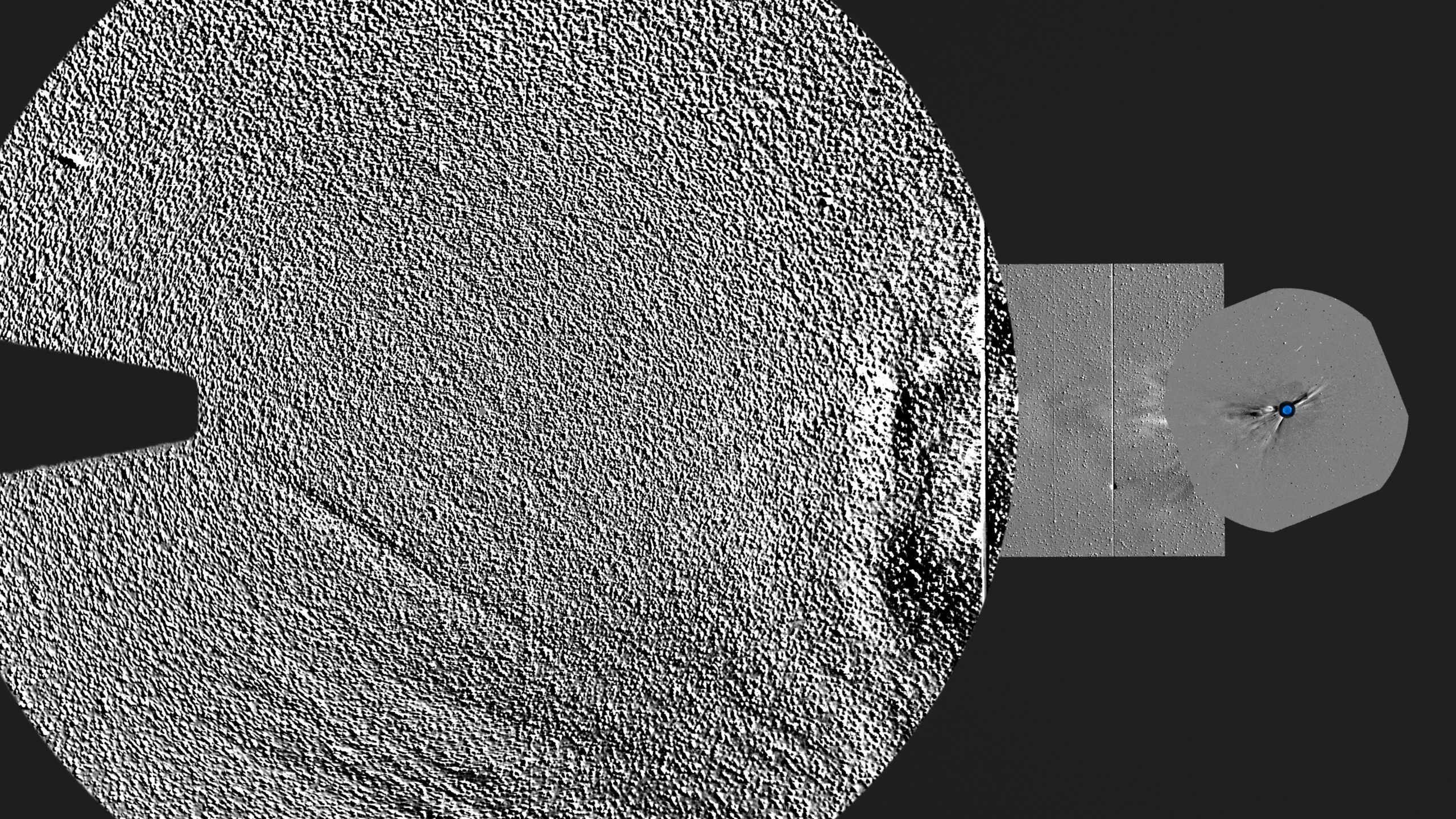

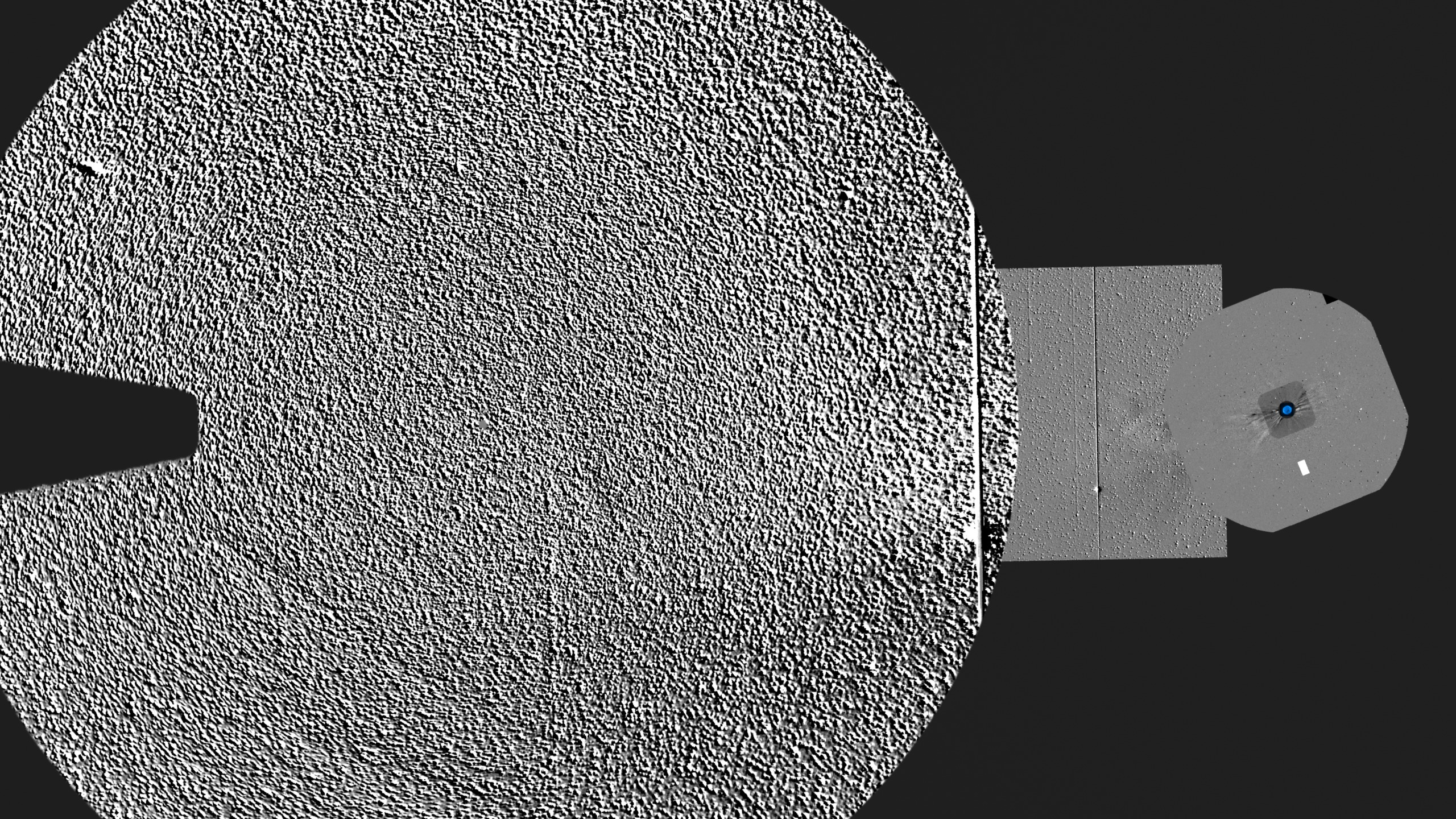
Visualization Credits
Therese Kucera (NASA/GSFC): Scientist
Russ Howard (NRL): Scientist
Angelos Vourlidas (NRL): Scientist
Michael Kaiser (NASA/GSFC): Scientist
NASA/Goddard Space Flight Center Scientific Visualization Studio
https://svs.gsfc.nasa.gov/3406
Missions:
SOHO
STEREO
Data Used:
STEREO-A/Heliospheric Imager 2 (HI-2)
2007-01-24 to 2007-01-27STEREO-A/Heliospheric Imager 1 (HI-1)
2007-01-24 to 2007-01-27STEREO-A/Extreme UltraViolet Imager (EUVI)
2007-01-24 to 2007-01-27STEREO
2007-01-24 to 2007-01-27SOHO/Large Angle Spectrometric COronagraph (LASCO)/C3 also referred to as: LASCO/C3
NASA and ESA - 2007-01-24 to 2007-01-27SOHO/Large Angle Spectrometric COronagraph (LASCO)/C2 also referred to as: LASCO/C2
NASA and ESA - 2007-01-24 to 2007-01-27This item is part of this series:
STEREO Post-Launch
Keywords:
SVS >> HDTV
SVS >> Heliosphere
SVS >> SOHO
GCMD >> Earth Science >> Sun-earth Interactions
GCMD >> Earth Science >> Sun-earth Interactions >> Solar Activity >> Coronal Properties
GCMD >> Location >> Corona
SVS >> Space Weather
SVS >> Coronagraph
SVS >> STEREO
NASA Science >> Sun
GCMD >> Earth Science >> Sun-earth Interactions >> Solar Activity >> Coronal Mass Ejections
GCMD keywords can be found on the Internet with the following citation: Olsen, L.M., G. Major, K. Shein, J. Scialdone, S. Ritz, T. Stevens, M. Morahan, A. Aleman, R. Vogel, S. Leicester, H. Weir, M. Meaux, S. Grebas, C.Solomon, M. Holland, T. Northcutt, R. A. Restrepo, R. Bilodeau, 2013. NASA/Global Change Master Directory (GCMD) Earth Science Keywords. Version 8.0.0.0.0











